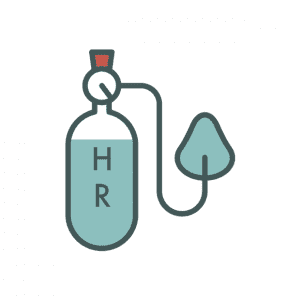Thank you once again to Beverley Sunderland at Crosslands Employment Lawyers for their excellent support and advice during these last 9 months! These FAQs deal with the mechanics of furloughing workers under the Job Retention Scheme (JRS) now in place until the 31st March 2021.
The JRS was first put in place to provide employers whose operations had been affected by coronavirus with wage assistance from 1 March 2020. It was originally intended to close on 31 October 2020; however, was extended as a result of the Government’s decision to place England into more severe lockdown measures at the start of November 2020. It was confirmed on 5 November that the extended JRS will run until the end of March 2021.
The Job Support Scheme, which was intended to replace the JRS from 1 November 2020, has been postponed indefinitely.
The Government has confirmed that there will be no gap in eligibility for support between the previously announced end date of JRS and this extension.
A Treasury Direction covering the rules of the extended JRS until 31 January 2021 was published on 13 November 2020. A further Direction will be created to cover the remainder of the JRS ending on 31 March 2021 which indicates that there will changes to the rules from February 2021.
What’s the Job Retention Scheme?
A scheme put in place by the Government to help employers retain employees during times when they were unable to provide work due to the impact of coronavirus so that they could avoid making redundancies. It involves designating employees as furloughed workers and by doing so, employers will be able to a receive a grant to cover a portion of their wage costs via the Scheme. This means that furloughed workers will still receive at least a portion of their wage even though they are not doing any work for a temporary period.
What is ‘furlough’?
The word ‘furlough’ generally means temporary leave of absence from work for which no pay is provided.
A furloughed employee is someone who, rather than being dismissed for redundancy by their employer or being put on lay off, is kept on the payroll during a period where the employer does not have any work for them, or does not have work for their full normal working hours.
An employee on full furlough will do no work for their employer during the claim period.
An employee on flexible furlough will work for some of their usual hours (i.e. part-time) and will be recorded as being on furlough for the remainder of their usual hours during the claim period. For example, an employee who would normally work for 35 hours a week may agree to work for 15 hours a week and will be recorded as furloughed for the other 20 hours.
The normal ‘no pay’ element to furlough does not apply when on the JRS because it will provide a grant for a portion of the employee’s wages.
When did the JRS start and how long will it last?
The JRS has been in place since March 2020 (actually announced a few weeks after that but backdated to the start of March) and was originally intended to end on 31 October 2020. An announcement at almost the last possible minute confirmed it would be extended it until 2 December. A few days later, another announcement confirmed it would continue until the end of March 2021.
Is this different to the Job Support Scheme?
Yes. The Job Support Scheme was put in place to take over from the JRS from 1 November. The extension to the JRS means the Job Support Scheme has been postponed indefinitely.
How much is the grant available under the JRS?
80% to a maximum of £2,500 per employee per month for unworked hours. Where an employee is on full furlough, this is what they will get per month (unless the employer decides to top up). Where an employee is on flexible furlough, they will be paid in full by the employer for the hours they work and the grant will cover 80% of pay for the unworked hours only, subject to a cap. The cap will always be less than £2,500 because that is the amount which applies to full time furlough which is not the case with flexible furlough.
The level of grant will be reviewed in January 2021. It is likely that a tapering system will be implemented, like last time, and employers will have to contribute to furloughed workers’ wages from February 2021 but the review will confirm this.
Which employers can use the Scheme?
All employers with a UK bank account and UK PAYE schemes can use the scheme to claim the grant, whether their business is open or closed. Importantly, employers do not need to have used furlough before in order to use the extended scheme. However, all employers will need to meet the eligibility requirements. Even though the extended Scheme was put in place in response to England’s lockdown, it will apply in all areas of the UK.
From December 2020, HMRC will publish the names of employers who have made claims under the JRS for the month of December onwards. Information may be withheld if HMRC are satisfied that publication will expose the employer or its employee or anyone living with them, to serious risk of violence or intimidation.
Can public sector employers use the Scheme?
The Government expects that employers with publicly funded staff costs (even if they are not in the public sector) will not use the JRS. Organisations can use the JRS if they are not fully funded by public grants and they should contact their sponsor department or respective administration for further guidance.
What situation does my business have to be in to use the scheme?
It does not appear that employees need to be facing redundancy in order for an employer to use the JRS. Guidance says ‘If you cannot maintain your workforce because your operations have been affected by coronavirus (COVID-19), you can furlough employees and apply for a grant…’
The Treasury Direction states, on this topic, ‘The purpose of JRS is to provide for payments to be made to employers on a claim made in respect of them incurring costs of employment in respect of employees who are within the scope of JRS arising from the health, social and economic emergency in the United Kingdom resulting from coronavirus…” and in relation to employees “whose employment activities have been adversely affected by the coronavirus and coronavirus disease or the measures taken to prevent or limit its further transmission.’
What about companies in administration?
Where a company is being taken under the management of an administrator, the administrator can furlough and claim for employees.
Administrators should only use the scheme if there is a reasonable likelihood of retaining the workers. For example, this could be as a result of an administration and pursuit of a sale of the business.
Which employees can be furloughed?
On the payroll
To be eligible to be claimed for under this extension, employees must be on an employer’s PAYE payroll by 23:59 30 October 2020. This means a Real Time Information (RTI) submission notifying payment for that employee to HMRC must have been made between 20 March 2020 and 30 October 2020.
Because of the need to be PAYE, it seems that those under the age of 16 cannot have wages claimed under the Scheme. National Insurance numbers are only issued at the age of 16 so before that point, the child will not generally be considered PAYE.
No previous furlough needed
Employees do not need to have been furloughed before in order to be placed into the JRS during the extension. However, all employees will need to meet the eligibility requirements.
Employees made redundant
If employees were employed by you on 23 September 2020 and you made a PAYE RTI submission to HMRC between 20 March 2020 and 30 October 2020, notifying a payment of earnings for that employee) and the employee was made redundant or stopped working for you on or after 23 September 2020, they can also qualify for the scheme if you re-employ them! There appear to be several HR issues related to this that are tricky to unravel!
The safest way appears to make it clear that employment is not continuous. To do this, a break of at least one week ending with a Saturday is needed.
There is an extremely high chance that the employee will be made redundant again at the end of the furlough period so the employer will need to go through the process again, which may require collective consultation dependent on the number of employees to be made redundant at the time, which may include some of the existing workforce as well as those brought back after having been made redundant the first time.
The further dismissal of these employees by way of redundancy may pose some issues. There is no absolute certainty that the two periods of employment will not be deemed continuous by an employment tribunal. This is because this situation has never been tested.
The rules on continuity mean that, after a redundancy, employment will be continuous if the employee starts a job for the employer within 4 weeks of the termination of employment but this applies where the offer of re-employment is made before the end of the employee’s employment under their old employment contract. This is unlikely to be the case in a furlough situation.
Additionally, the employer would need to understand they have to pay the NI/pension contributions for anyone they re-hire after redundancy so it will cost them to do this.
Fixed term contracts
If the employee’s fixed term contract has not already expired, it can be extended or renewed. You can put the employee on furlough as long as they were employed by you on or before 30 October 2020. You must have made a PAYE Real Time Information (RTI) submission to HMRC between 20 March 2020 and 30 October 2020, notifying a payment of earnings for that employee.
An employee who was on a fixed term contract can be re-employed and claimed for if:
- they were employed by you on 23 September 2020
- their contract expired on or after 23 September 2020
- you made a PAYE RTI submission to HMRC between 20 March 2020 and 30 October 2020, notifying a payment of earnings for that employee.
Shielding/carers/sickness
Employees can be furloughed where they are unable to work because they:
- are shielding in line with public health guidance (or need to stay at home with someone who is shielding)
- have caring responsibilities resulting from coronavirus, including employees that need to look after children.
The JRS is not intended for short-term sick absences. If, however, employers want to furlough employees for business reasons and they are currently off sick, they are eligible to do so, as with other employees.
Furloughed employees who become ill, due to coronavirus or any other cause, must be paid at least SSP. As under the JRS previously, it is up to employers to decide whether to move these employees onto SSP or to keep them on furlough, at their furloughed rate.
Types of contract
Employees can be on any type of contract. You can claim for office holders (including company directors); salaried member of Limited Liability Partnerships (LLPs); agency workers (including those employed by umbrella companies); limb (b) workers; contingent workers in the public sector, contractors with public sector engagements in scope of IR35 off-payroll working rules.
Foreign nationals
Foreign nationals are eligible to be furloughed. Grants under the JRS are not counted as ‘access to public funds’, and you can furlough employees on all categories of visa.
Where a TUPE has taken place
A new employer is eligible to claim in respect of employees transferred if the TUPE or PAYE business succession rules apply to the change in ownership. The employees being claimed for should have been:
- transferred from their old employer to their new employer on or after 1 September 2020
- employed by either their old employer or new employer on 30 October 2020
- on a PAYE Real Time Information (RTI) submission to HMRC, by their old or new employer between 20 March 2020 and 30 October 2020, notifying a payment of earnings for that employee.
Returning from family leave
If your employee returns from maternity, shared parental, adoption, paternity or parental bereavement leave and you are claiming in respect of a period that starts on or after 1 November, the normal scheme rules apply.
If your employee decides to end their maternity leave early to enable them to be furloughed (with your agreement), they will need to give you at least 8 weeks’ notice of their return to work and you will not be able to furlough them until the end of the 8 weeks.
Supply teachers
Supply teachers are eligible for the scheme in the same way as other employees and can continue to be claimed for during school holiday periods provided that the usual eligibility criteria are met.
Consolidated PAYE schemes
Where a group of companies have multiple PAYE schemes and there is a transfer of all employees from these schemes into a new consolidated PAYE scheme, the new scheme will be eligible to continue to furlough and claim for employees.
Employees with more than one employer
If your employee has more than one employer, they can be furloughed for each job. Each job is separate, and for claims for periods on or before 31 October 2020 – the cap applies to each employer individually.
Employees can be furloughed in one job and receive a furloughed payment but continue working for another employer and receive their normal wages.
If an employee has had multiple employers over the past year, has only worked for one of them at any one time, and is being furloughed by their current employer, their former employer/s should not re-employ them, put them on furlough and claim for their wages through the scheme.
Employees on unpaid leave
The Scheme cannot be used in respect of employees on unpaid leave or unpaid sabbatical.
How do I select employees for furlough?
Employers must be careful not to discriminate when deciding who to offer furlough to. If some employees will stay in work, i.e. not a blanket furlough for everyone, an employer could initially ask for volunteers. However, in some cases there may be more volunteers than furlough spaces open. The procedure an employer follows to decide which employees to furlough may depend on its current financial situation. If the employer needs to very urgently furlough employees or make them redundant in order to be able to continue to trade, a limited selection procedure carried out on an urgent basis is likely to be acceptable. However, where an employer does not have any immediate financial concerns, it is likely to be more reasonable for it to follow a more comprehensive procedure. This could involve a selection matrix akin to a redundancy procedure.
Prioritising vulnerable workers who have volunteered is unlikely to be age discrimination as it’s almost certainly justifiable in current circumstances. Automatically choosing older workers, for example, may be an issue if they do not want to be furloughed and would rather work for the 100% pay.
Do I need to get employees to agree to the furlough?
You will need to get agreement from employees to designate them as furloughed and reduce their pay (if that is what you want to do – you may decide to furlough and keep on 100% pay by topping up the Govt grant). To be eligible for the grant, employers must have confirmed to their employee (or reached collective agreement with a trade union) in writing that they have been furloughed.
Employers need to agree the pay reduction with employees as part of the agreement to furlough because normal employment law principles apply.
If the employee was already on furlough until the end of October 2020
If an employee was on furlough in the period running to the end of October 2020, it is recommended to enter into a new agreement to cover the period from 1 November 2020 rather than relying on an original agreement which could have been in place for months. This is because it could be said that a furlough agreement entered into in April, for example, was foreseen to apply only until the end of the Scheme which was, until the very last minute, set for 31 October 2020. It is recommended that, where furlough is continuing uninterrupted from October into November, that the agreement is refreshed to specifically cover the period from 1 November 2020. A letter to confirm continuation of furlough from 1 November 2020 would be appropriate here.
Retrospective agreements
Any flexible furlough or furlough agreement made retrospectively that has effect from 1 November 2020 will be valid for the purposes of a JRS claim. Only retrospective agreements put in place up to and including 13 November 2020 may be relied on for the purposes of a JRS claim. Employers looking to refresh pre-November furlough agreements could use this retrospective approach to confirm the validity of the agreement.
Employees already agreed to the Job Support Scheme
If you had already agreed with employees to be placed into the now postponed Job Support Scheme (Open) or Job Support Scheme (Closed), you will need to revisit the agreement and ensure they agree to be furloughed under the JRS during its extension.
The agreement should cover both changes to working hours and a reduction in pay (if you are not choosing to top up pay to the full amount the employee would normally receive). It should also instruct employees to cease to do all work during the furloughed hours.
The agreement must be kept for five years.
Do I have to collectively consult?
On 3 August 2020, the Government guidance on ‘Advanced notification of redundancies’ was amended to say that there is no requirement to carry out collective consultation, or notify the Secretary of State on the HR1 form when furloughing staff if employers are not contemplating dismissing the employees for not accepting the variation of terms. Collective consultation will still be needed if the employer does contemplate dismissing 20+ employees as a result of not accepting the change in terms.
What kind of part-time working arrangements can be used for flexible furlough?
Guidance confirms that any part-time arrangement, including any amount of time or shift pattern, can be agreed; employers have utmost flexibility to assess what will work for them.
Clearly, flexible furlough will not be an option for employers who have no work to provide to their staff. Such employers may choose to keep their employees on full furlough for as long as they deem necessary subject to the closure of the scheme in its entirety at the end of October 2020.
How long does furlough last?
There is no minimum furlough period.
If I have furloughed an employee, brought them back to work and then I want to furlough them again, do I have to get new written agreement?
Yes, new written agreement is needed that the employee will cease to do all work again for the new furlough period. Our stance is that the written agreement relates to the single furlough period only and that agreement expires when the employee is recalled to work.
How do I work out how much I can claim?
You will need to calculate an employee’s reference salary in order to determine what 80% of it is. When employees are on flexible furlough, it will also be necessary to calculate what their usual hours are so you can record both working and furloughed hours.
Reference salary is taken from a specific period according to the rules and is not adjusted because someone gets a pay rise e.g. because of NMW. A pay rise in April does not affect the salary you got in the last pay period before 19 March which is when the reference salary was taken from for furlough between March and October 2020, and also for furlough from November onwards when the employee was eligible the first time round.
Claims cannot be made for statutory payments, such as statutory maternity pay, and the gross amount of earnings falling for reimbursement must be correspondingly reduced.
Identifying your reference period for salary
The reference period is the last pay period ending on or before 19 March 2020 for employees who either:
- were on your payroll on 19 March 2020, that is you made a payment of earnings to them in the tax year 2019 to 2020 which was reported to HMRC on a Real Time Information (RTI) Full Payment Submission (FPS) on or before 19 March 2020
- you made a valid JRS claim for in a claim period ending any time on or before 31 October 2020
This means that the last pay period ending on or before 19 March 2020 is used for employees who:
- qualified for the JRS back in March 2020 and were furloughed, as well as those who
- qualified for it but were not furloughed.
For an employee who does not fall into the categories above, the reference period is different.
For employees on a fixed salary, it is 80% of the wages payable in the last pay period ending on or before 30 October 2020.
If your fixed pay employee has worked enough overtime to have a significant effect on the amount you need to claim, you should calculate 80% of their usual wages using the method for employees whose pay varies. Examples of situations where overtime could have a significant effect on the claim amount include where the employee worked overtime:
- in the reference period
- in the corresponding calendar period to the pay period you are claiming for
- a lot, or often, in the tax year up to the reference period
You do not need to amend any previous claims, however if these circumstances apply you should use the calculation for employees whose pay varies for any future claims.
For employees whose pay varies, it is 80% of the average payable between the start date of their employment or 6 April 2020 (whichever is later) and the day before their JRS extension furlough periods begins.
Where employees are flexibly furloughed, their usual hours need to be calculated.
If an employee was not previously eligible for JRS and works fixed hours or their pay does not vary according to the number of hours they work, their usual hours will be the contracted hours worked in the last pay period ending on or before 30 October 2020.
If an employee was not previously eligible for JRS and works variable hours, their usual hours will be the average hours worked between:
- the start date of the 2020 to 2021 tax year, (for example, 6 April 2020)
- the day before their JRS extension furlough periods begins
All of the above dates are inclusive.
You’ll then need to work out 80% of your employee’s usual wage.
What types of payments can I use to count towards reference salary?
If you’ve already claimed for an employee who was on furlough during October, and they are paid a fixed salary, you will follow the same usual wage calculation for claim periods after 31 October 2020.
The amount you should use when calculating 80% of your employees’ wages for hours not worked, is made up of the regular payments you are obliged to make, including:
- regular wages you paid to employees
- non-discretionary payments for hours worked, including overtime
- non-discretionary fees
- non-discretionary commission payments
- piece rate payments
You cannot include the following when calculating wages:
- payments made at the discretion of the employer or a client – where the employer or client was under no contractual obligation to pay, including:
- any tips, including those distributed through troncs
- discretionary bonuses
- discretionary commission payments
- non-cash payments
- non-monetary benefits like benefits in kind (such as a company car) and benefits received under salary sacrifice schemes (including pension contributions) that reduce an employee’s taxable pay
Where the employer provides benefits to furloughed employees, including through a salary sacrifice scheme, these benefits should be in addition to the wages that must be paid under the terms of the Job Retention Scheme.
Normally, an employee cannot switch freely out of most salary sacrifice schemes unless there is a life event. HMRC agrees that coronavirus counts as a life event that could warrant changes to salary sacrifice arrangements, if the relevant employment contract is updated accordingly.
Non-discretionary payments
When you’re working out if a payment is non-discretionary, only include payments which you have a contractual obligation to pay and to which your employee has an enforceable right.
When variable payments are specified in a contract and those payments are always made, then those payments may become non-discretionary. If that is the case, they should be included when calculating 80% of your employees’ wages.
Non-discretionary overtime payments
If your employee has been paid variable payments due to working overtime, you can include these payments when calculating 80% of their wages as long as the overtime payments were nondiscretionary.
Payments for overtime worked are non-discretionary when you are contractually obliged to pay the employee at a set and defined rate for the overtime that they have worked.
How do I calculate an employee’s usual hours?
You can calculate the usual hours for the entire claim period or for each pay period, or part of a pay period, that falls within that claim period. This guidance assumes that you will calculate on a pay period basis but either method is acceptable.
If you calculate the usual hours for the entire claim period and the result is not a whole number, you should round it up to the next whole number. If you calculate the usual hours on a pay period basis you should round the result up or down to the nearest whole number.
There are two different calculations you can use to work out your employee’s usual hours, depending on whether they work fixed or variable hours.
You should work out usual hours for employees who work variable hours, if either:
- your employee is not contracted to a fixed number of hours
- your employee’s pay depends on the number of hours they work
If neither of these apply, you should work out your employee’s usual hours for an employee who is contracted for a fixed number of hours.
The employee’s working pattern does not have to match their pay period (for example, an employee could be contracted to fixed 40 hours a week, but be paid a variable monthly amount because of shift allowances). HMRC will not decline or seek repayment of any grant based solely on the particular choice between fixed or variable approach to calculating usual hours, as long as a reasonable choice is made.
Fixed hours employees
You’ll work out your employee’s usual hours (for employees with fixed hours), by looking at their contracted hours at the end of their reference period.
The reference period is the last pay period ending on or before 19 March 2020 for employees who either:
- were on your payroll on 19 March 2020 (meaning you made a payment of earnings to them in the tax year 2019 to 2020 which was reported to HMRC on a Real Time Information (RTI) Full Payment Submission (FPS) on or before 19 March 2020
- you made a valid Coronavirus Job Retention Scheme claim for them in a claim period ending any time on or before 31 October 2020
For all other employees, the employee’s reference period will be their last pay period ending on or before 30 October 2020.
To calculate the number of usual hours for each pay period (or partial pay period):
- Start with the hours your employee was contracted for at the end of their reference period.
- Divide by the number of calendar days in the repeating working pattern, including non-working days.
- Multiply by the number of calendar days in the pay period (or partial pay period) you are claiming for.
- Round up or down if the result isn’t a whole number.
If an employee with fixed hours was on annual leave, off work sick or on family related statutory leave at any time during the last reference period, the usual hours should be calculated as if the employee had not taken that leave.
Variable hour employees
Where the pay varies by the amount of time worked, you will have shown the number of hours worked on your employees’ payslips in line with legislation introduced in April 2019
Employers should identify the hours the employee worked using pay records, time sheets and other records which show time worked. If these aren’t available then use other records, such as rotas or work diaries. If these records are not available, employers may use the pay rate to work back from gross pay.
You will use differing approaches to calculate your employee’s ‘usual hours’ for an employee who works variable hours depending on whether the employee has received a payment of earnings from you in tax year 2019-20 which was reported on a Real Time Information (RTI) Full Payment Submission (FPS) to HMRC on or before 19 March 2020.
For those who did, calculate ‘usual hours’ based on the higher of either:
- the average number of hours worked in the tax year 2019 to 2020
- the corresponding calendar period in the tax year 2019 to 2020
This also applies to employees for whom you made a valid claim in a claim period ending any time on or before 31 October 2020.
Otherwise calculate the average number of hours worked from 6 April 2020 and up to the employee’s first day spent on furlough on or after 1 November 2020.
If your employee has variable pay you will complete a similar comparison to calculate their usual wages but the result may be different.
When you calculate the usual hours, you should include:
- any hours of leave for which the employee was paid their full contracted rate (such as annual leave)
- any hours worked as ‘overtime’, but only if the pay for those hours was not discretionary
If you are calculating the usual hours for an employee who is part of a flexible work time arrangement (“flexi-leave”), you should:
- not count hours as hours worked that the employee worked but was not paid for because they accrued paid time off which they could take later
- count the hours as hours worked that the employee took as paid time off, which they had accrued by working additional hours at some other time
To work out the usual hours for each pay period (or partial pay period) based on the average number of hours worked in the tax year 2019 to 2020:
- Start with the number of hours actually worked (or on paid annual leave or flexi-leave) in the tax year 2019 to 2020 before the employee was furloughed, or the end of the tax year if earlier.
- Divide by the number of calendar days the employee was employed by you in the tax year 2019 to 2020, up until the day before they were furloughed, or the end of the tax year if earlier.
- Multiply by the number of calendar days in the pay period (or partial pay period) you are claiming for.
- Round up or down if the result isn’t a whole number.
When you calculate the number of calendar days in step 2, you should not count any calendar days where the employee was on a period of:
- statutory sick pay related leave
- family related statutory leave
- reduced rate paid leave following a period of statutory sick pay related leave
- reduced rate paid leave following a period of family related statutory leave
To work out the usual hours for a pay period or partial pay period based on the corresponding calendar period in the tax year 2019 to 2020:
- Identify the pay periods in the 2019 to 2020 tax year that correspond to at least one calendar day in the pay period (or partial pay period) you are claiming for.
- If the pay period (or partial pay period) you are claiming for starts and ends on the same calendar days as the identified pay period in the tax year 2019 to 2020 – use the number of hours they actually worked in that pay period.
- If the pay period (or partial pay period) you are claiming for does not start and end on the same calendar days as the identified pay periods in the tax year 2019 to 2020 – you’ll need to add together a proportion of the hours worked in each of the pay periods you’ve identified.
If you have to work out the usual hours based on the hours worked in more than one pay period in the tax year 2019 to 2020:
- Start with the number of hours worked in the first pay period identified in the tax year 2019 to 2020.
- Multiply by the number of calendar days in that pay period which correspond to at least one calendar day in the pay period (or partial pay period) you are claiming for.
- Divide by the total number of calendar days in the pay period in the tax year 2019 to 2020.
- Repeat steps 1, 2 and 3 for each subsequent identified pay period in the tax year 2019 to 2020.
- Add them all together.
- Round up or down if the result is not a whole number.
To work out the usual hours for each pay period (or partial pay period) based on the average number of hours worked in the tax year 2020 to 2021:
- Start with the number of hours actually worked (or on paid annual leave or flexi-leave) from 6 April 2020 and up to the employee’s first day spent on furlough on or after 1 November 2020.
- Divide by the number of calendar days the employee was employed by you in the tax year 2020 to 2021, up until the day before they were furloughed.
- Multiply by the number of calendar days in the pay period (or partial pay period) you are claiming for.
- Round up or down if the result isn’t a whole number.
When you calculate the number of calendar days in step 2, you should not count any calendar days where the employee was on a period of:
- statutory sick pay related leave
- family related statutory leave
- reduced rate paid leave following a period of statutory sick pay related leave
- reduced rate paid leave following a period of family related statutory leave
What’s the starting point of pay for those returning from family-related statutory leave?
Family-related statutory leave includes maternity leave, paternity leave, shared parental leave, adoption leave, parental bereavement leave and unpaid parental leave.
For employees on fixed pay, claims for full or part time employees furloughed on return from family-related statutory leave should be calculated against their salary, before tax, not the pay they received whilst on family-related statutory leave. The same principles apply where the employee is returning from a period of unpaid statutory family-related leave.
What’s the starting point of pay for those returning to work after being on sick pay?
For employees on fixed pay, claims for full or part time employees furloughed on return to work after time off sick should be calculated against their salary, before tax, not the pay they received whilst off sick.
Claims for those on variable pay, returning to work after time off sick, should be calculated using the normal rules for employees whose pay varies.
What’s the starting point of pay for those returning to work after being sabbatical or unpaid leave?
You’ll need to use the amount they would have been paid if they were on paid leave when calculating 80% of their wages.
What’s the claim period?
You need to decide the length of your claim period.
Your claim period is made up of the days you are claiming a grant for. The start date of your first claim period is the date your first employee was furloughed. Claim periods must start and end within the same calendar month. All claim periods must last at least seven days. Periods of fewer than 7 days can be claimed for if they are what HMRC call an ‘orphan period’, which is a period of no more than 6 consecutive days that:
- begins on the first day of a JRS extension calendar month, or
- ends on the last day of a JRS extension calendar month.
You should match your claim period to the dates you process your payroll, if you can. You can only make one claim for any period so you must include all your furloughed or flexibly furloughed employees in one claim even if you pay them at different times.
Will the payment be taxable?
Yes, payments you make to furloughed employees will be subject to PAYE and National Insurance contributions.
Will I be able to recover Employer’s NI contributions and pension contributions under the Job Retention Scheme?
No. Employers will have to fund both Employer NICs and minimum automatic enrolment employer pension contributions.
Do I have to wait until after I have paid wages before I make a claim?
You can make a claim in anticipation of an imminent payroll run, at the point you run your payroll or after you have run their payroll.
Do I have to pay 100% of the wages in order to claim?
No. You can choose to top up to 100% but do not have to. Those who choose to top up can still only claim the maximum available under the scheme.
How does the grant interact with national minimum wage?
Individuals are only entitled to the national minimum wage (NMW) for the hours they work. If they are furloughed and do not work and 80% of their normal earnings would take them below the NMW, they still only receive 80% as they are not working.
Can I rotate employees on and off furlough?
There is nothing within the guidance which prohibits rotating furlough leave amongst employees. This might be a good way of keeping all employees happy as they will get a more equal share of 100% and 80% pay.
Can the employee undertake any work when in furlough?
The employee must not be working at all for you or for any linked or associated company during hours recorded as furlough. If they do (especially if required or asked by the employer) this is likely to be seen by HMRC as furlough fraud. Employers must impress on employees that they should do no work at all, including responding to emails.
Are all types of work related activity banned during furlough?
Employees are able to undertake training during hours recorded as furlough. Training for the purpose of improving an employee’s effectiveness in the employer’s business, or the performance of the employer’s business, is permitted provided employees do not provide services to or generate revenue for their employer. Furloughed workers undertaking training must be paid at least the minimum wage rate applicable for the time they spend on this activity though this is likely to be covered by the grant payment in any case. If the pay attracted by the training is in excess of the furlough payment, employers must pay the excess.
Directors on furlough may make a JRS claim, run payroll, and also carry out any statutory duties in relation to filing accounts or providing other information relating to the administration of the company, without it affecting a claim in relation to them.
Employees are able to undertake training during hours recorded as furlough provided they do not provide services to or generate revenue for their employer. Furloughed workers undertaking training must be paid at least the minimum wage rate applicable for the time they spend on this activity though this is likely to be covered by the grant payment in any case. If the pay attracted by the training is in excess of the furlough payment, employers must pay the excess.
Whilst on furlough, employees who are union or non-union representatives may undertake duties and activities for the purpose of individual or collective representation of employees or other workers. However in doing this, they must not provide services to or generate revenue for, or on behalf of their organisation or a linked or associated organisation. The same principle applies to pension scheme trustees but a professional, independent pension scheme trustee who has been furloughed by the independent trustee company cannot undertake trustee work that would provide services to or generate revenue for, or on behalf of, the independent trustee company or any organisation linked or associated with that independent trustee company during hours which you record them as being on furlough.
Can the employee get a new job somewhere else when on furlough from my organisation?
The employer’s current rules on getting another job would still apply so any clauses or other agreements covering this should be checked. Employers can still enforce those rules and act in accordance with them e.g. considering whether the other job would present a conflict of interest etc.
If getting another job is allowed, employers should consider how other work to be done during the employee’s normal working hours sits with being able to call the employee back to work on what could be short notice. They might want to have a rule that the employee must report back for work whenever required and having another job is not an excuse not to – it’s up to the employer how they wish to play it.
If the other job is outside of the employee’s normal working hours then this shouldn’t be a problem subject to the conflict of interest etc point.
If an employee has had multiple employers over the past year, has only worked for one of them at any one time, and is being furloughed by their current employer, their former employer/s should not re-employ them, put them on furlough and claim for their wages through the scheme.
What happens to my apprentices?
Apprentices can be furloughed in the same way as other employees and they can continue to train whilst furloughed.
However, apprentices must get at least the appropriate minimum wage rate for all the time they spend training which is not covered by the 80% cover.
Where apprentices are furloughed or placed on unpaid leave, or where the nature of their employment changes and no longer supports their apprenticeship, the apprentice, employer and training provider should consider whether a break in learning would be appropriate.
Apprenticeship funding rules already make provision for disruption in learning:
- less than 4 weeks – in these circumstances neither the employer nor the training provider needs to report the interruption, the end-date for the apprenticeship remains the same and there is no change to the payment of funding
- more than 4 weeks – in these circumstances, employers and/or training providers must report a formal break in learning. Where a break in learning is reported, the payment of funding to the training provider will be suspended for the duration of the break in learning.
Funding rules currently state that a break in learning must be initiated by the apprentice. Employers and training providers can now, temporarily, also report and initiate a break in learning where the interruption to learning is greater than 4 weeks.
Where apprentices are made redundant, the Government will support them to find alternative employment, and continue their apprenticeship as quickly as possible, and within 12 weeks.
Where an apprentice is made redundant, the training provider must support the apprentice to find another employer. In instances where a significant number of apprentices are made redundant (for example, because a large employer faces difficulties), the ESFA will attempt to provide exceptional practical support to the apprentices and training providers to secure alternative employers for the individuals.
Do I still have to pay the apprenticeship levy?
Yes. This is not covered by the grant.
Do holidays accrue during furlough?
Statutory minimum will continue to accrue because the contract is still in existence. You could try to agree that contractual leave doesn’t accrue but this may make it harder for get agreement to furlough in the first place and we don’t know whether it is allowed to attach any more conditions to furlough other than a reduction in pay.
Can annual leave be taken at the same time as furlough?
Yes, but the employer must top up to 100% pay. It can be taken during both full and flexible furlough.
Government guidance states that if an employee is flexibly furloughed and takes annual leave, the hours of annual leave should be counted as furloughed hours and not working hours. This means that the employer may include these hours in their claim to the Scheme, but must top up pay to 100% because annual leave during furlough must be paid at normal pay.
Guidance also states that employees should not be placed on furlough for a period simply because they are on holiday for that period. If this rule were not in place, employers may arbitrarily place an employee who is about to go on annual leave on furlough in order to be able to recoup the permitted percentage of their wage costs through the scheme.
Can employers have a rule that no annual leave can be taken during furlough?
Yes. Given that it is now possible to carry four weeks of leave forward to the next two holiday years, the employer may be less concerned than it otherwise would be about workers having lots of annual leave to take in that leave year on their return from furlough.
Can employers enforce annual leave during furlough?
Yes. Government guidance published on 13 May 2020 confirms that employers can require a worker to take annual leave when on furlough. However, it states that if an employer wants to do this, they should “consider whether any restrictions the worker is under, such as the need to socially distance or self-isolate, would prevent the worker from resting, relaxing and enjoying leisure time, which is the fundamental purpose of holiday.”
Can the employer claim 80% of holiday pay through the scheme?
Yes.
Can an employee request leave whilst on furlough?
Yes, unless the employer has designated furlough as a time when leave cannot be taken. The employer can refuse the request though, as they normally can.
Does furlough override pre-booked holiday and bank holiday?
No, annual leave including Bank Holidays can be taken whilst on furlough.
Where a bank holiday falls during furlough and the worker would have usually worked the bank holiday, their furlough will be unaffected by the bank holiday.
However, if the worker would usually have had the bank holiday as annual leave, there are 2 options.
Either: the bank holiday is taken as annual leave in which case the employer must pay the correct holiday pay for the worker.
Or: the bank holiday is deferred if the employer and the worker agree that the bank holiday will not be taken as annual leave at that time. This holiday will have to be given later in the year.
Do disciplinary proceedings have to be paused if an employee is on furlough?
Not necessarily. Acas has released guidance on this. It is summarised below.
The employer needs to decide if it would still be fair and reasonable to carry on with or start a disciplinary procedure while:
- people are on furlough
- following social distancing and other public health guidelines, if they’re in the workplace
- people are working from home, and it would have to be carried out remotely.
The guidance states that a furloughed employee can take part in a disciplinary investigation or hearing as:
- the subject of proceedings
- a chairperson or notetaker.
- an interviewee or witness.
- a companion.
However, it goes on to say that the employee must be “doing it out of their own choice” ie it must be voluntary participation, and done in line with current public health guidance. The requirement for an employee’s participation to be voluntary is difficult, it is rarely the employee’s own choice to be in a formal disciplinary hearing. Perhaps this means that the employee must be asked whether they wish to take part during furlough and if they say no, then it would not be voluntary participation.
Acas says that a person can be a chairperson, note-taker or witness during a formal hearing but, arguably, doing this could amount to ‘work’ and ‘providing a service’ for the employer which is not permitted during furlough. If this is the case, following the Acas guidance could mean that an employer is unable to claim under the Scheme for that employee. However, if those particular employees of the business were still working, and the only one on furlough was the subject of the proceedings then this problem would not be raised. The ‘voluntary’ part would still need to be navigated, along with ensuring a fair and reasonable procedure.
The Acas guidance states that, in deciding whether the procedure can still be carried out in a fair and reasonable way, the employer should consider:
- the individual circumstances and sensitivity of the case, for example if it needs to be dealt with urgently, or if it would be dealt with more fairly when people are able to return to the workplace.
- if anyone involved has a reasonable objection to the procedure going ahead at that time.
- whether everyone involved has access to the technology needed to attend video meetings.
- whether anyone involved has a disability or other accessibility issues that might affect their ability to use video technology, and whether any reasonable adjustments might be needed.
- whether any witness statements or other evidence can be seen clearly by everyone involved in the meeting.
- whether it is possible to fairly assess and question evidence given by people interviewed in a video meeting.
- whether it is possible for those involved to get hold of all the evidence needed for the investigation or hearing, for example, records or files that are kept in the office.
- whether it is possible for the person who is under the disciplinary investigation to be accompanied during the hearing.
The same principles will also apply to grievance procedures.
The guidance expressly states that, for most disciplinary and grievance meetings held by video, there will be no reason to record the meeting. If it is felt that there is a good reason to video it, the recording must be dealt with in accordance with data protection laws.
Can I make a claim for wages payable during the statutory notice period?
You can continue to claim for a furloughed employee who is serving a statutory notice period, however grants cannot be used to substitute redundancy payments. This appears to say that claims are only permitted from 1 November for someone serving the statutory element of their notice pay, and not the contractual element. Logic says that statutory notice runs first and so anything after the length of the statutory period appears to have to be covered by the employer.
After initially saying that the Government would review the position on claiming wages during statutory and contractual notice periods, the guidance was amended on 13 November to confirm that, for claim periods starting on or after 1 December 2020, you cannot claim for any days on or after 1 December 2020 during which the furloughed employee was serving a contractual or statutory notice period (this includes people serving notice of retirement or resignation). If an employee subsequently starts a contractual or statutory notice period on a day covered by a previously submitted claim, you will need to make an adjustment.
Can I make someone redundant when they are on furlough?
Although the scheme is in place to prevent redundancies, it is inevitable that some businesses will assess that redundancies are required. The Government guidance confirms that employees can be made redundant while they are on furlough. Redundancy processes are still subject to the normal rules when carried out on furlough and, to prevent an unfair dismissal claim, reasonableness of the decision will be a key factor. This includes the financial position of the employer. As part of the process, employers should consider why furlough, with its ability to claim capped wages from the Scheme, was not suitable in the circumstances.
However, see the previous question regarding claiming for an employee’s wages during their notice period, which may have the effect of preventing redundancies from being made during the scheme.
If someone is made redundant after a period of furlough, is their statutory redundancy pay calculated on their reduced furlough pay or their normal pay?
On 31 July 2020, regulations came into effect which require redundancy pay to be calculated using an employee’s full pre-furlough pay.
The regulations also require full pre-furlough pay to be used when calculating:
- pay during time off to look for work/training during redundancy notice period
- pay during the notice period
- compensation for failure to provide a written statement
- unfair dismissal compensation
- whether the employee has worked ‘short time’ for the purposes of claiming statutory redundancy pay
From what date can claims be made?
Claims can be made from 8am on Wednesday 11 November 2020.
Claims can be made:
- in respect of an employee for a minimum 7 day claim window
- in advance
- in arrears for the period from 1 November 2020 to 11 November 2020, from the week commencing 9 November 2020.
The claim period must start and end within the same calendar month. If the pay period includes days in more than one month, each of those claims will need to be calculated separately. Claim periods cannot overlap, and employees claimed for will need to be included in each separate claim made.
An employer can make a claim in anticipation of an imminent payroll run, at the point they run their payroll or after they have run their payroll.
Claims from 1 November 2020 must be submitted by 11.59pm 14 calendar days after the month you’re claiming for. If this time falls on the weekend then claims should be submitted on the next working day. The closing date for claims up to and including 31 October 2020 remains 30 November 2020.
To claim, employers will need:
- employer PAYE scheme reference number
- the number of employees being furloughed
- National Insurance Numbers for the furloughed employees (If you are claiming in relation to someone with a temporary NI number, the guidance says you should call HMRC)
- Names of the furloughed employees
- Payroll/employee number for the furloughed employees (optional)
- their Self Assessment Unique Taxpayer Reference, Corporation Tax Unique Taxpayer Reference, Company Registration Number or Employer Name (as appropriate)
- the claim period (start and end date)
- amount claimed (per the minimum length of furloughing of 3 consecutive weeks)
- their bank account number and sort code
- their contact name
- their phone number
Once you’ve claimed, you’ll get a claim reference number. HMRC will then check that your claim is correct and pay the claim amount by BACs into your bank account within six working days.
You must:
- keep a copy of all records for 6 years, including:
- the amount claimed and claim period for each employee
- the claim reference number for your records
- your calculations in case HMRC need more information about your claim
- for employees you flexibly furloughed, usual hours worked including any calculations that were required
- for employees you flexibly furloughed, actual hours worked
- tell your employees that you have made a claim and that they do not need to take any more action
- pay your employee their wages, if you have not already.
If you use an agent who is authorised to do PAYE online for you, they will be able to claim on your behalf.
If you’re using an agent you must:
- get their agent ID (your agent can get this from their HMRC online service for agents account under ‘authorise client’)
- be enrolled for PAYE online for employers
- give them your UK bank account details (only provide bank account details where a BACs payment can be accepted)
If you would like to use an agent, but do not have one authorised to do PAYE online for you, you can do that by accessing your HMRC online services and selecting ‘Manage Account’.
You can also use this service to remove authorisation from your agent if you do not want it to continue after they have submitted your claim(s).
If you’re putting 100 or more employees on furlough, you can download a template if you’re claiming for 100 or more employees and upload this when you claim.
Using this template will help ensure your claim is processed quickly and successfully. Your template may be rejected if you do not give the information in the right format.
What if I am overpaid after making a claim?
If you receive a support payment from the government that your business was not eligible for, such as an overpaid furlough grant, you must notify HRMC within 90 days of the receipt of this amount.
The overpayment could be because of the following reasons:
- your circumstances have changed
- you have not used the payment to pay the costs it was intended to reimburse, within a reasonable period of time (for example, to pay your staff)
HMRC may charge a penalty for failure to notify them of the discrepancy in time. However, they will not in the following circumstances:
- you have a ‘reasonable excuse’ for the failure to notify – what amounts to a ‘reasonable excuse’ will vary from company to company
- the failure to notify was not deliberate
- you notified HMRC without unreasonable delay after your reasonable excuse ended.
You can work to reduce the amount of penalty charged by providing assistance to the HRMC. Examples of this assistance are:
- telling them about, or agreeing that there’s a failure and how and why it happened
- telling them everything you can about the extent of the failure as soon as you know about it
- telling and helping them by answering our questions in full
- helping them to understand your accounts or records
- helping them by replying to their letters quickly
- helping them by agreeing to attend any meetings, or visits, at a mutually convenient time
- helping them by checking your own records to identify the extent of the failure
- giving them access to documents they’ve asked for without unnecessary delay
- giving them access to documents they may not know about, as well as those that they ask to see.
If they are to issue a penalty, HMRC will write to a company and outline clearly how they have worked its amount out, taking into account any assistance provided. If there are aspects in its calculation you disagree with, you should get in touch with them as soon as is possible.
Criminal investigations may be carried out if your company has deliberately done something wrong.





















